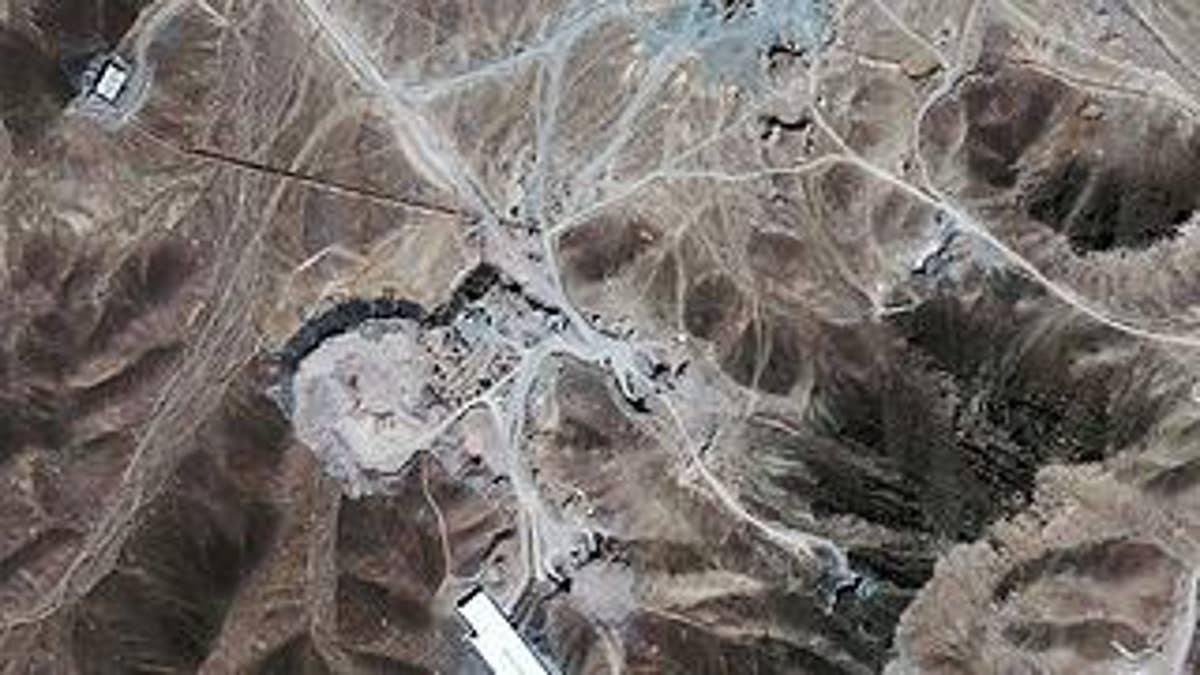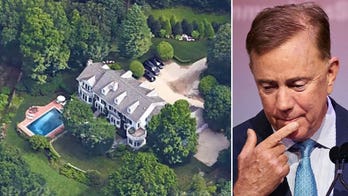
The Pentagon told Congress over the summer that there is an "urgent operational need" to speed up production of a colossal bomb designed to destroy underground and heavily protected weapons bunkers -- which one defense official warned are increasingly used by "hostile states."
The move to accelerate the development comes amid revelations about Iran's long-suspected nuclear site inside a mountain near Qom, stirring speculation about whether Iran is a target.
Pentagon officials acknowledge that the new bomb is intended to blow up fortified sites like those used by Iran and North Korea for their nuclear programs, but they deny there is a specific target in mind. The senior defense official told Fox News that the bomb was originally requested by the Air Force back in 2004 with North Korea's rogue nuclear activity, not Iran's, in mind.
"This weapon has been under development since 2004 because of the prevalence of deeply buried targets which is a growing concern and we are looking at solutions and capabilities to address that," the senior defense official said.
The 15-ton behemoth -- called the "massive ordnance penetrator," or MOP -- will be the largest non-nuclear bomb in the U.S. arsenal and carry 5,300 pounds of explosives. The bomb is about 10 times more powerful than the weapon it is designed to replace, and is designed to break through bunkers shielded by 10,000 pounds of reinforced concrete.
The Pentagon has awarded a nearly $52 million contract to speed up placement of the bomb aboard the B-2 Stealth bomber, and officials say the bomb could be fielded as soon as next summer.
Though there are no plans to use the bomb, the defense official said, the Pentagon would like to have four made by mid-2010.
"The MOP technology is being developed and is designed to defeat hardened facilities that are increasingly being used by hostile states to protect weapons of mass destruction production storage, delivery systems and command and control," the official said.
The Pentagon repeatedly noted the "urgent" need for the bomb in its 2009 omnibus request sent to four relevant congressional committees in July.
"The Department has an Urgent Operational Need (UON) for the capability to strike hard and deeply buried targets in high threat environments. The MOP is the weapon of choice to meet the requirements of the UON," the request said. "The warfighter has recently identified the need to expedite the MOP program that was scheduled to start in 2010. ... Based on the timeline to provide this capability, the program requires an earlier start."
The Obama administration has struggled to counter suspicions lingering from George W. Bush's presidency that the United States is either planning to bomb Iranian nuclear facilities itself or would look the other way if Israel did the same.
The administration has been careful not to take military action off the table even as it reached out to Iran with historic talks earlier this month. Tougher sanctions are the immediate backup if diplomacy fails to stop what the West fears is a drive for a nuclear weapon.
Defense Secretary Robert Gates recently said a strike against Iran's nuclear facilities would probably only buy time. Joint Chiefs of Staff Chairman Adm. Mike Mullen has called a strike an option he doesn't want to use.
The new U.S. bomb would be the culmination of planning begun in the Bush years.
"Without going into any intelligence, there are countries that have used technology to go further underground and to take those facilities and make them hardened," Pentagon spokesman Bryan Whitman said. "This is not a new phenomenon, but it is a growing one."
After testing began in 2007, development of the bomb was slowed by about two years because of budgetary issues, Whitman said, and the administration moved last summer to return to the previous schedule.
North Korea, led by Kim Jong Il, is a known nuclear weapons state and has exploded working devices underground. The United States and other countries have offered to buy out the country's weapons program. The Obama administration is trying to lure Pyongyang back to the bargaining table after a walkout last year.
Iran is a more complex case, for both diplomatic and technical reasons. Iran's president, Mahmoud Ahmadinejad, claims its nuclear program is peaceful and meant only to produce energy, but the West suspects a covert bomb program that may be only a year or so away from fruition.
Details about Iran's once-secret program have come out slowly and often under duress, as with last month's surprise confirmation of the hidden underground development site near Qom.
That revelation came a month after the Pentagon had asked Congress to shift money to speed up the MOP program, although U.S. and other intelligence agencies had suspected for years that Iran was still hiding at least one nuclear development site.
The MOP could, in theory, take out bunkers such as those Saddam Hussein had begun to construct for weapons programs in Iraq, or flatten the kind of cave and tunnel networks that allowed Al Qaeda leader Osama bin Laden to escape U.S. assault in Tora Bora, Afghanistan, shortly after the U.S. invasion in 2001.
The precision-guided bomb is designed to drill through earth and almost any underground encasement to reach weapons depots, labs or hideouts.
Fox News' Justin Fishel and The Associated Press contributed to this report.




